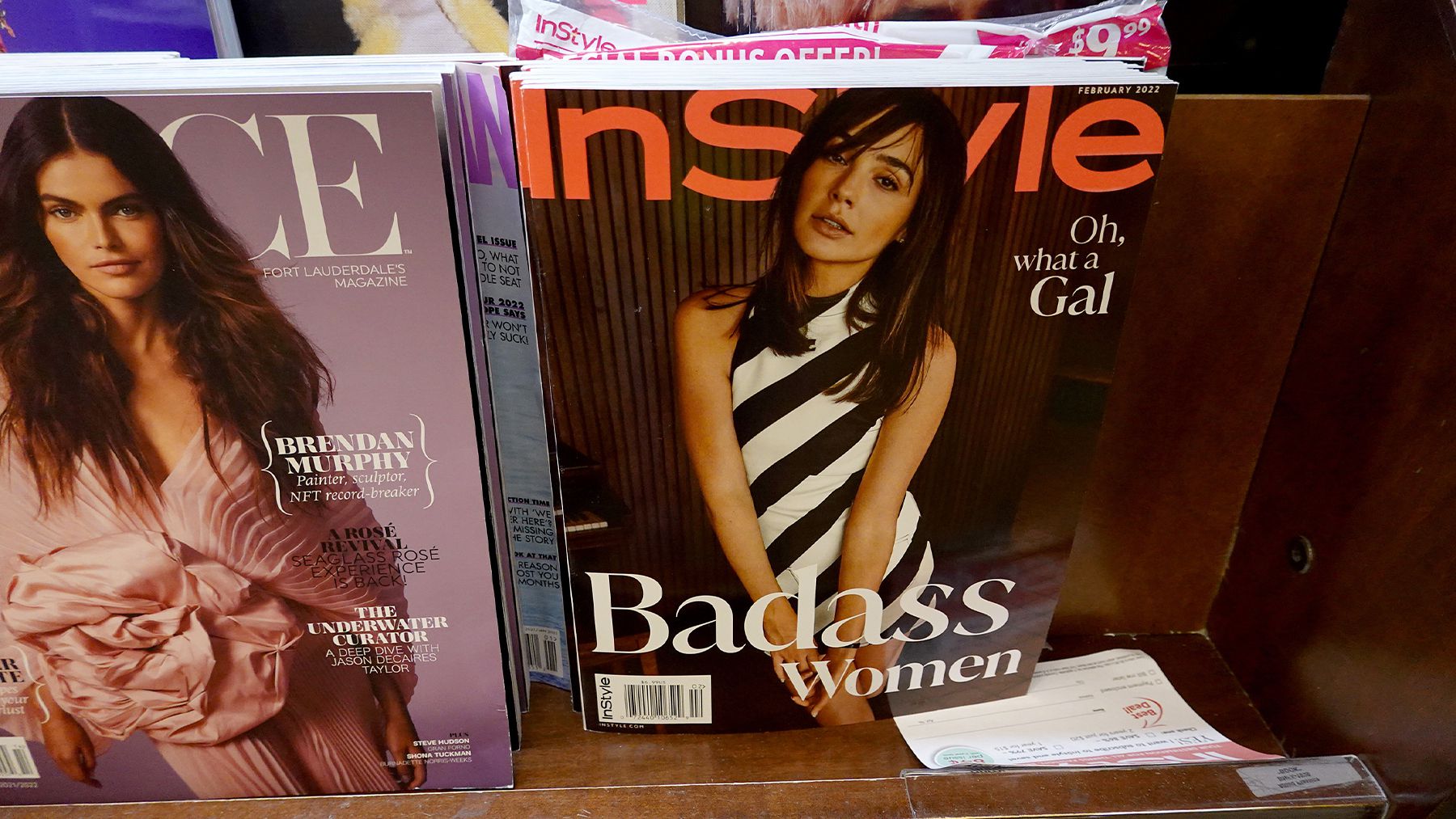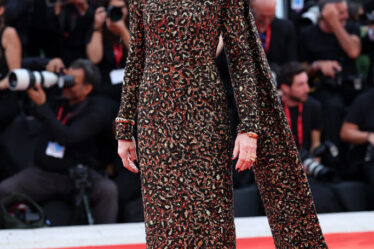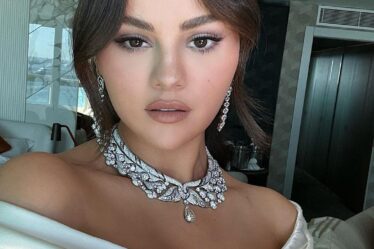
When Dotdash Meredith announced it was shuttering American fashion magazine InStyle’s print edition in February, it was a familiar enough story for the beleaguered publishing industry.
Once-dominant titles like Glamour and Marie Claire had also ended print operations in recent years. All three magazines had an everywoman appeal, with stories on “pandemic brain fog” and the cosmetic procedure behind the “fox eye” trend. At InStyle, former editor Laura Brown put broadly beloved celebrities like Jennifer Aniston and Melissa McCarthy on the cover, just as predecessor Ariel Foxman had done. She differentiated from the past by moving away from mass-market shopping pages, instead filling the book with profiles of emerging designers like Thebe Magugu and Anifa Mvuemba and adding quirkier human interest elements.
Brown’s fashion and celebrity connections, which allowed her to secure major covers even as celebrities began to prefer using their own channels to communicate news and build their own brands, couldn’t save InStyle from the headwinds decimating the print publishing model. According to PwC, by next year digital advertising revenue will overtake print at consumer magazines — mostly because print ad sales are falling so quickly. Publishers are rapidly pivoting to meet this reality; Condé Nast recorded its first annual profit in years in 2021 after considerable investment in its digital operations, according to the Wall Street Journal.
But print isn’t dead yet. This year saw the launch of Black Fashion Fair Volume 0: Seen, a magazine from the retail and education platform of the same name; former W editor Stefano Tonchi launched the first in a planned series of glossies covering America’s wealthy enclaves; another former editor, Emanuele Farneti of Vogue Italia, meanwhile is behind the revamp of the print weekly D under the Italian publisher Gedi.
The publishers still betting on print are targeting niche communities rather than trying to reach the biggest possible audience. After all, InStyle’s 2.1 million subscribers weren’t enough to save it. They are also rethinking their relationship with brands, in some cases working with one commercial partner per issue instead of chasing as many advertisers as possible.
“We literally do not care how many people read us,” said Angus James MacEwan, Highsnobiety’s senior vice president of US business. “No one in our company asks us how many people read our magazine and our partners don’t either. All in all, print is bigger for us commercially than it ever has been.”
Creating Value
Black Fashion Fair Volume 0: Seen sold out in less than two hours in early February. The 200-page magazine was produced exclusively with Warby Parker and priced at $95 for a limited-edition version and $300 for the collectors’ edition.
The magazine worked because it filled a void in mainstream publishing (with the exception of titles like Essence) where Black designers and fashion creatives were allowed the freedom to create images and features without acquiescing to the vision of editors. The New York Times and Vogue alike covered the launch, while the Metropolitan Museum of Art in New York purchased copies. Its deepest impact was felt by the community to which it spoke.
“I’m gonna cry forever if I can’t get that Black Fashion Fair Volume 0: Seen publication,” said one Twitter user. “This is history! In print!”
Warby Parker eyewear appeared in the fashion editorials in Black Fashion Fair and although the magazine’s release was timed to the brand’s new collection launch, the magazine’s team had “full autonomy” to create what they wanted, said Warby Parker chief executive Neil Blumenthal.
Rethinking Success
Publishers like Highsnobiety measure the success of their print magazines by how it contributes to the wider brand. Securing the biggest possible circulation in order to maximise ad sales is less important.
HIGHStyle, Highsnobiety’s print edition, is aimed at readers who already visit Highsnobiety’s website, attend its events and buy its products, said MacEwan. Issues focus on a range of themes: a recent HIGHStyle cover teases readers with an image of model Irina Shayk, outfitted in a ribbed sports bra and matching briefs with her hands tucked suggestively away; the Summer 2021 issue of the magazine, titled HIGHEnergy, focused on athleticism and included cover star Marcus Rashford. The magazine is available for purchase online for about $22.
Print magazines are also valuable in a more intangible way, lending cachet to their digital counterparts. It’s often easier to sell a celebrity on the idea of appearing on a print magazine cover, especially as print covers become more scarce and therefore more covetable, talent agents say. Although digital covers can help drive social media engagement, they don’t make the same impact and are often quickly drowned out by other content.
“For us, it’s pretty clear that the print magazine is very much a good trickle-down for the whole brand,” said i-D editor-in-chief Alastair McKimm.
Selling Through Not Selling Out
It’s not just publishers that need brands; brands need publishers to help reach consumers beyond social media. Instead of offering advertising partners full-page ads at the front of a book, magazines are putting entire issues up for sale. The result: editorial titles are able to produce financially viable issues, while advertisers can have peace of mind knowing their brand isn’t competing for readers’ attention alongside a competitor.
In March, Bottega Veneta funded the return of Butt magazine with a 100-page issue launched during Paris Fashion Week for which the brand was the sole advertiser.
HIGHStyle offers advertising partners paid cover placement — a long-time open secret in fashion publishing — and branded stories that are amplified on the magazine’s digital channels. As a result, MacEwan said, the magazine has “more than tripled” its traditional ad revenue year-over-year.
Although deals like these are a lucrative pursuit for publishers, the common refrain among creatives is that too heavy a hand from the brand can drown out the vision. The brand’s best interests aren’t so far from the editorial team’s, though: the whole point of pursuing a magazine partnership is to differentiate from the brand’s other marketing channels where they have full control over the message. In order to avoid conflict, a brand sponsor and the magazine should align on the vision and ethos, so as to allow the editorial team the freedom to create under agreed-upon guidelines from the beginning.
Vice-owned i-D’s “Out of The Blue” issue, which was “co-curated” with Tiffany and was released in December 2021, helped propel the magazine to its most financially successful year ever, said McKimm.
“There was an understanding that this was going to be an i-D issue, powered by Tiffany and that, obviously, would be celebrating their product as well,” McKimm said. “But there were also a lot of pages and photoshoots that didn’t incorporate any jewellery at all … all sorts of things in an issue that would normally be in an i-D issue that were still in an i-D issue.”
Editor’s Note: This article was revised on 21 March, 2022. An earlier version of this article misstated that the latest issue of Butt magazine is being sold in Bottega Veneta’s stores, online and off. It is not. Bottega Veneta is the issue’s sole advertiser, but the magazine is being distributed through select bookstores and newsstands, and is not for sale in Bottega Veneta stores.



